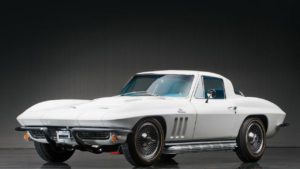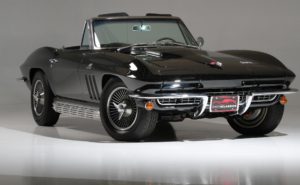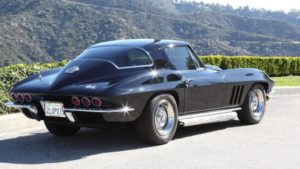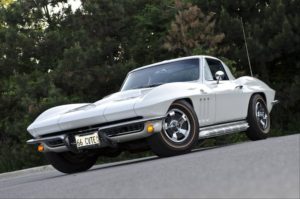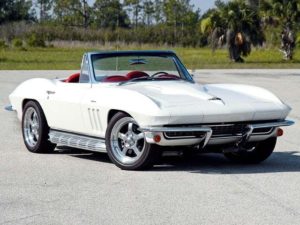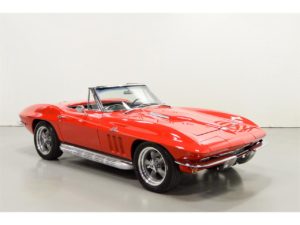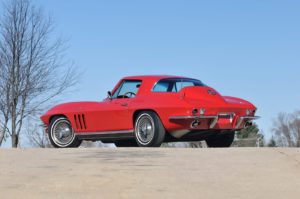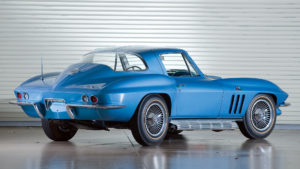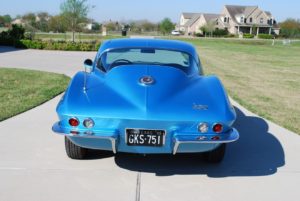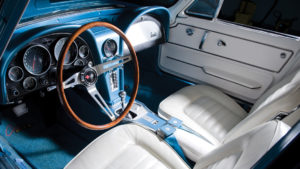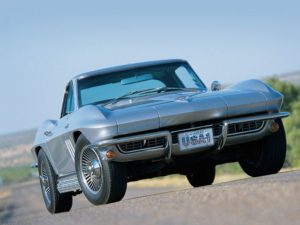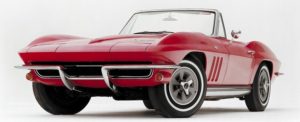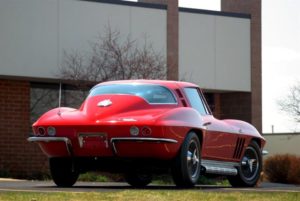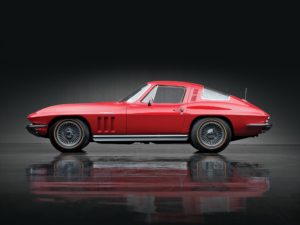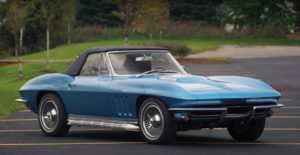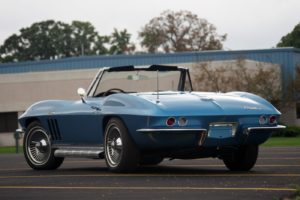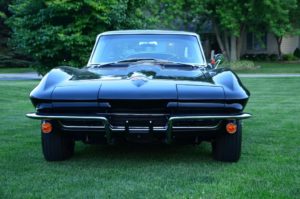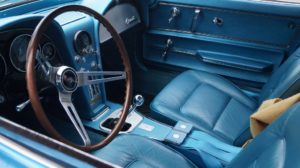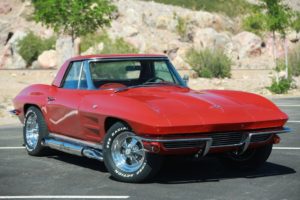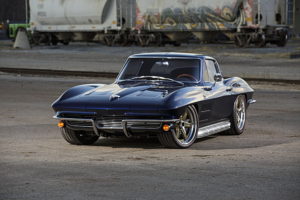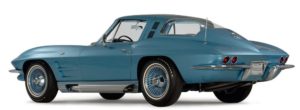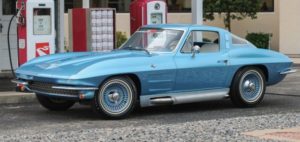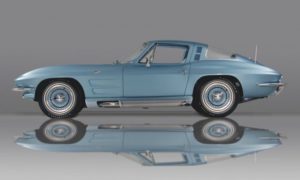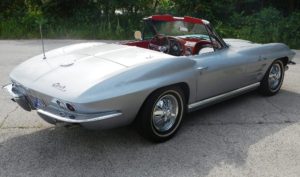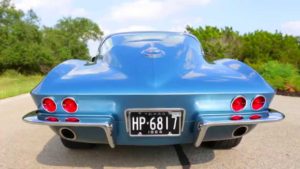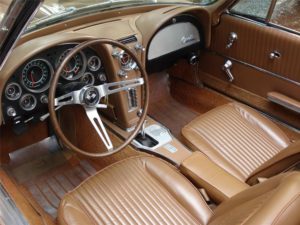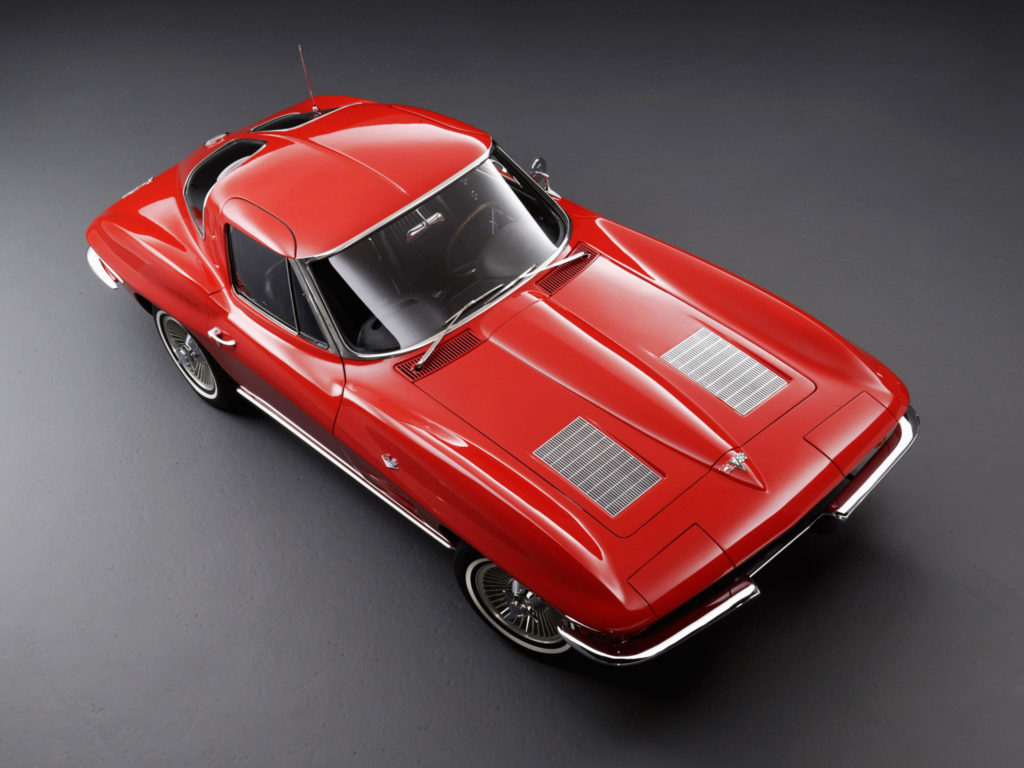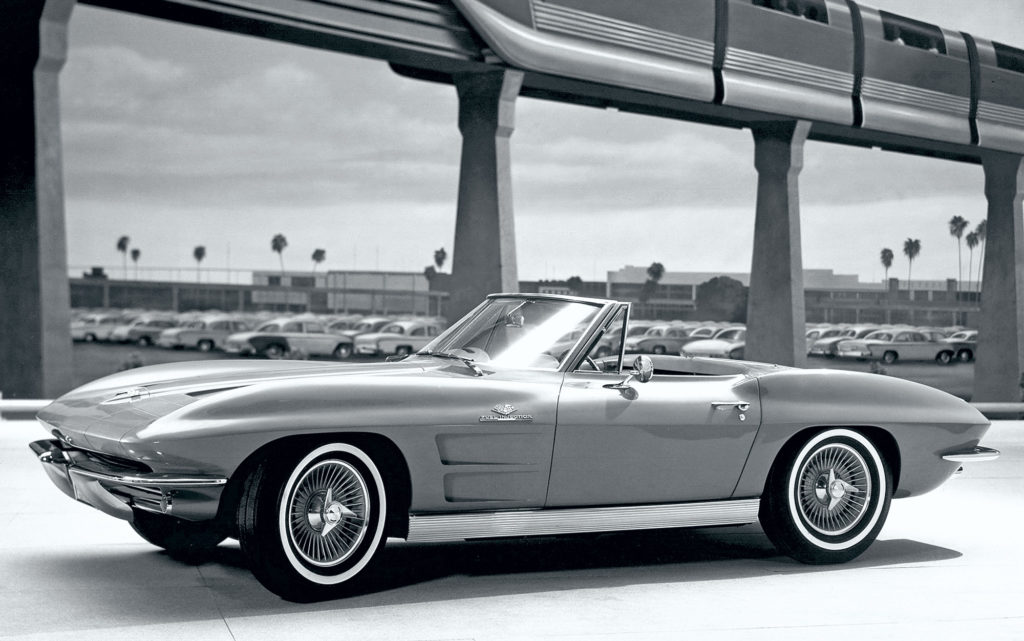Pricing: $4295.00 (Coupe), $4084.00 (Convertible)
Engine options: 327ci ohv V8 (fuel injected or carbureted (multiple-horsepower options) 396ci, 425hp ohv V8 engine
Transmission: 327ci – 350HP Engine, 427ci – 390HP Engine, 427ci – 425HP Engine
Top speed: 140mph
Units produced: 27,720
Available colors: Tuxedo Black, Ermine White, Rally Red, Nassau Blue, Laguna Blue, Trophy Blue, Mosport Green, Sunfire Yellow, Silver Pearl, Milano Maroon
Highlights of the year:
With the 1966 Corvette arriving after General Motors’ recent, overwhelming success with the 427 Sting Ray, there was no question that the newest Corvette model would continue to feature big-block engines.
This turnabout in events was rather interesting, especially given GM management’s earlier decree that no car line smaller than a full-size model would carry an engine larger than 400 cubic inches. Perhaps fortunately for Corvette, it was Carroll Shelby’s two-seat Cobra, which featured its own 427 cubic inch V8 engine that prompted the change of opinion.
Chevrolet now felt it would also need a 427 cubic inch engine, and it materialized for the 1966 model year.
The introduction of the big-block V-8 engine captured the imagination of Corvette consumers the world over, and in no time at all, the demand for big-blocks far surpassed those of the conventional 327 small block Chevy engine.
As a result, the small-block engine options were reduced from five to two for the 1966 model year, with only the 300-horsepower (L75) and 350-horsepower (L79) versions remaining available to prospective consumers. Even amongst the earlier small-block options that had been available on earlier Corvettes, these two engines were arguably the best all-around engines.
Additionally, both could be paired with the Powerglide automatic, the standard three-speed manual, or either of the optional four-speed manual transmissions.
There were minor modifications made to the Corvette’s appearance. For one, the Sting Ray’s front end was mildly altered with the introduction of an “egg crate” grille insert which replaced the previously installed horizontal bars.
Restyled wheel covers were introduced along with an all-new rocker trim. Also, the coupe lost its roof-mounted extractor vents, which had proven to be inefficient on earlier model years.
Lastly, less notable upgrades like the addition of “Corvette Sting Ray” scripts to the hood and the introduction of standard backup lights were introduced.
Given that these were amongst the only notable changes from 1965 to 1966, there was a good deal of reasonable speculation that an all-new Corvette was slated for 1967
Still, the lack of changes for the 1966 model year did not hurt the Corvette’s popularity with consumers. In fact, 1966 would prove to be another record-breaking year in Corvette sales, with volume rising to 27,720 units sold – an increase of more than 4,200 units over 1965’s sales of 23,562 units.
Consumers found that the new Corvette, especially one equipped with the 427 big-block, had all the refinement it needed. The 427 Sting Ray was an astonishingly fast car, with 0-60 times of just 4.8 seconds, 0-100 mph times of 11.2 seconds, and a top speed of 140 miles per hour (when properly equipped with the short 4.11:1 gearing.) Even in cars equipped with the somewhat less sensational 3.36:1 ratio, the Corvette was still able to run 0-60 times of 5.4 seconds with a standing quarter of 12.8 seconds at 112 miles per hour (source Car and Driver).
Impressive as those numbers were, the intent of the 427 cubic inch engine had been to meet the Shelby Cobra head-on and give it some staunch competition. However, even despite the staggering horsepower and the impressive performance numbers, the fact remained that the Corvette was a half a ton heavier than the Shelby Cobra so, even with the same horsepower rating, it was considered less than a threat. Still, the Corvette did not go home empty-handed. The Corvette still took a number of victories in endurance racing including Penske’s team’s 12th place overall in the GT class.
Photos of the 1966 Corvette:
Sources:
https://www.corvsport.com/1966-c2-corvette-image-gallery/
https://www.corvsport.com/1966-c2-corvette/
https://www.barrett-jackson.com/Events/Event/Details/1966-CHEVROLET-CORVETTE-CONVERTIBLE-66270
https://www.wsupercars.com/chevrolet-1966-corvette-stingray-427.php
